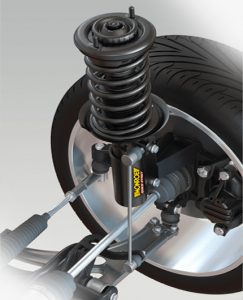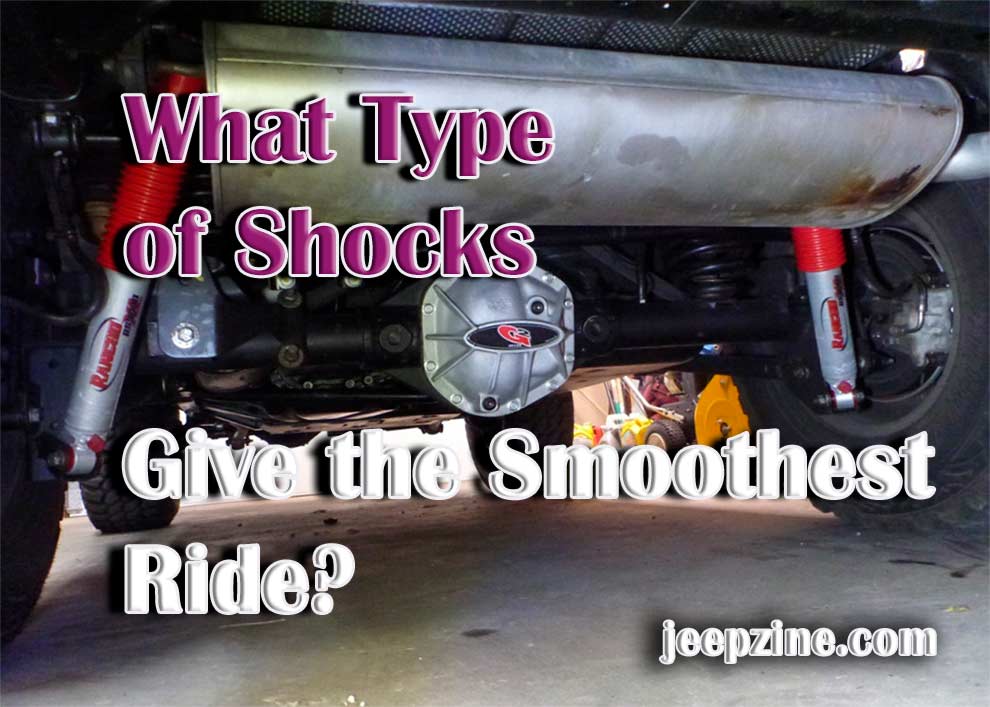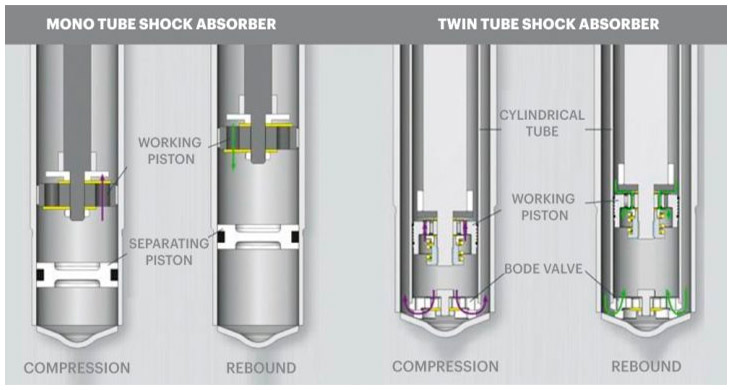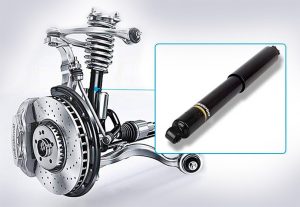What’s the #1 job of shock absorbers? To smooth out the bumps on the road, of course, and to improve the ride quality! AKA the “shocks”, they dampen shock impulses on rough surfaces. As a result, the driver feels pretty comfortable even when driving on the most challenging terrain. Without the Best shocks for F250, F150, or any other truck, your head will start to spin and you’ll get nauseous when pushing through a bumpy road.
But which shocks are the smoothest ones, though? Should you go with the mono-tube, or twin-tube design when buying a new set of absorbers? And what about the different types – gas-powered, heavy-duty, or air shocks? Yep, there are quite a lot of options out there. So, join me, and let’s find the right investment for your hard-earned bucks!
Step #1: Mono vs. Twin
Are you a big off-roading fan? Or maybe you mostly prefer to stick to the highways and city roads? This is the first question that you gotta answer. Otherwise, you won’t be able to find the right shock absorber for your Jeep. That’s right: different shocks are better suited for different situations – there are no universally-fit units out there. Here’s a quick look at what mono and twin absorbers are best for:
-
Mono-tube. Specifically designed for trucks and SUVs, mono-tube shocks are very good against ups, downs, bumps, and steep climbs. Nitrogen-powered, they will be the right investment if you mostly prefer to conquer the wilderness behind the wheel of the F250. These devices are more suited for the rough nature of off-roading trails and can take a beating.
-
Twin-tube. You might think that since mono-tube shocks are great on challenging terrain, they’ll be even better on smooth roads, but that’s not actually true. Instead, you’ll feel a lack of control over the truck, and the ride won’t be nearly as enjoyable as you’d expect. In contrast, twin-tube absorbers are perfect for highways. Noise-, vibration-, and rattle-free, they make it seem like you’re rolling through butter.
Step #2: Gas, Air, or Heavy-Duty?
Alright, now that we know the difference between mono- and twin-tube designs, it’s time to talk about the different types available on the market:
-
Gas shocks. Got a mid-size truck, or a compact SUV? Gas shocks will be right up your alley. These shocks contain nitrogen that easily handles ups and downs on the road. Most 2020 and 2021 cars produced in the States come equipped with these types of shocks. They won’t be a great match for bigger cars, though. But, for smaller ones, gas shocks are, indeed, the smoothest.
-
Air shocks. As you might’ve guessed, air shocks rely on pressurized air to keep shock impulses to a minimum. The best thing about these shocks – they’re pretty quiet even when pushed to the limit. Again, they’re not the best option for bigger vehicles. They’re not particularly cheap, either. Consider air shocks if you own a relatively smaller car.
-
Heavy-duty shocks. For a big, strong, and bulky truck/SUV (like the F250, for example), heavy-duty shocks are the way to go. They have proven to be extremely capable in tough situations and can push through layers of snow, mud, deep lakes, and more. It’s not very easy to keep a full-size vehicle balanced and smooth, by the way, which is why heavy-duty absorbers are just as expensive as air shocks.
-
Unless you’ve got a bike or a scooter parked in your garage, just go ahead and skip this one. Coilovers are rarely seen on sedans, trucks, or SUVs. Furthermore, they require lots of skills and the right type of tools to install/replace, even if you know your way around two-wheeled transports.
Step #3: Shocks or Struts?

Oh, and vehicles equipped with struts usually don’t have any upper control arms. The obvious question is – which is the better option? In my experience, shocks are way smoother and give you more control over the vehicle, which is very important for off-roading. However, a truck/SUV that comes equipped with struts will cost you less.
Step #4: Does Size Matter?
Modern-day shocks go from 16 to 24 inches. But does longer automatically mean better? The answer is no, not necessarily. The key here is to find shocks that fit your vehicle perfectly. You’ll find all the necessary information on the manufacturer’s website, the user manual, or you can just ask the staff at the auto shop for guidance.
And remember: when you decide to lift the Jeep, you might be forced to buy a new set of shock absorbers to ensure optimal performance. So, while the size of the shocks doesn’t affect the smoothness of the ride, it’s still a factor to consider. That’s pretty much all there is to know!






 Gas shocks. Got a mid-size truck, or a compact SUV? Gas shocks will be right up your alley. These shocks contain nitrogen that easily handles ups and downs on the road. Most 2020 and 2021 cars produced in the States come equipped with these types of shocks. They won’t be a great match for bigger cars, though. But, for smaller ones, gas shocks are, indeed, the smoothest.
Gas shocks. Got a mid-size truck, or a compact SUV? Gas shocks will be right up your alley. These shocks contain nitrogen that easily handles ups and downs on the road. Most 2020 and 2021 cars produced in the States come equipped with these types of shocks. They won’t be a great match for bigger cars, though. But, for smaller ones, gas shocks are, indeed, the smoothest.
Add Comment